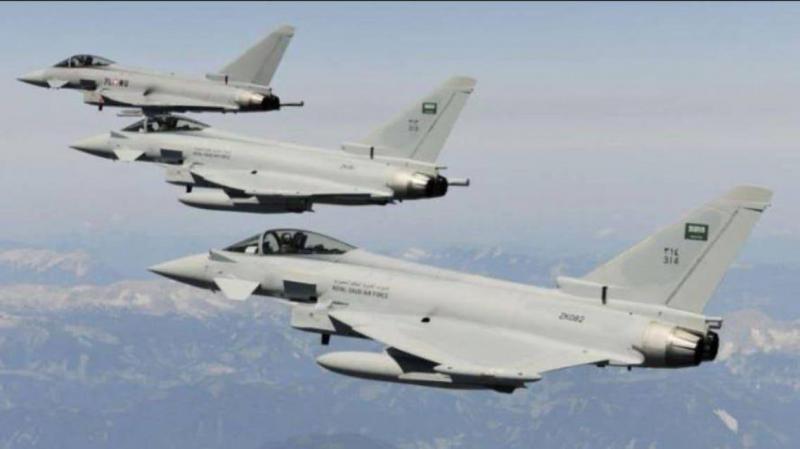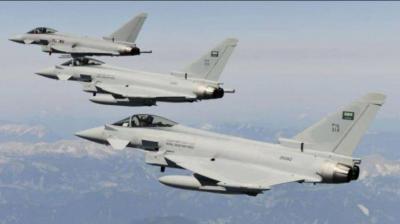The Coalition to Support Legitimacy in Yemen announced early Tuesday that it carried out airstrikes targeting secret ballistic missile sites in Sana'a, confirming the destruction of a significant ballistic missile target in the Dhubyan district. A circulated video showed explosions following the coalition's strikes on Houthi ballistic missile storage sites in Sana'a.
The coalition revealed that the officials of the Houthi militia's secret sites in Sana'a had used hospitals, organizations, and civilians as human shields, noting that precautionary measures were taken to prevent collateral damage to civilians and civilian objects. The coalition had previously announced the start of airstrikes on legitimate military targets in Sana'a, urging civilians not to gather or approach the targeted sites. They affirmed that the operation complies with international humanitarian law and the principle of legitimate defense.
Al Arabiya obtained footage on Monday from the Coalition to Support Legitimacy in Yemen, revealing Houthi militia training on UN aircraft to test an aerial missile system. The video showed several Houthi elements conducting experiments and tests on one of the aerial systems by using a UN aircraft during takeoff and landing at Sana'a International Airport to ensure the system's effectiveness, considering the aircraft as a moving aerial target in simulations of intercept and destruction scenarios.
Experts from the Revolutionary Guard
Additionally, a figure believed to be a foreign expert was shown supervising the testing process, conducting a live test of missile launch by the Houthis, which indicates the involvement of elements from the Iranian Revolutionary Guard and Hezbollah in launching hostile operations, threatening maritime navigation and global trade, as well as transferring knowledge and providing training and support to the militia in violation of United Nations Security Council Resolution 2216.
Recorded footage confirmed the coalition's previous statements about the Houthis converting the airport into a military base that includes workshops for assembling, rigging, storing, and launching ballistic missiles and drones.
Converting Sana'a Airport into a Military Base
Commenting on these scenes, the coalition's official spokesman, Brigadier General Turki al-Maliki, stated that Iran had transformed the Yemeni capital's airport into a military base after establishing an air bridge in 2014 with an average of 28 weekly flights from Tehran to Sana'a via Iranian Airlines (Mahan Air), transporting all kinds of weapons, including advanced weapons, to their Houthi affiliates.
He added that the militias had turned the airport into a barracks that contains workshops for assembling, rigging, storing, and launching ballistic missiles and drones to target civilians and civilian objects within Yemen.
Site for Launching Hostile Attacks
He also noted that the capital's airport has become a primary site for launching cross-border hostile attacks. It is worth mentioning that this airport is open for air navigation for UN aircraft and international non-governmental organizations to transport humanitarian and relief assistance, as well as to bring humanitarian workers to Sana'a. Therefore, these experiments pose a direct threat to the safety of the airspace for UN aircraft and international organizations and put their personnel's lives at risk.




